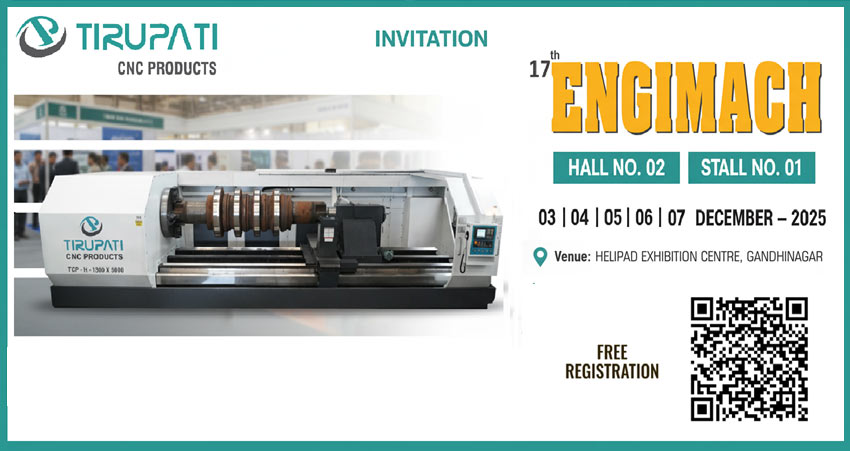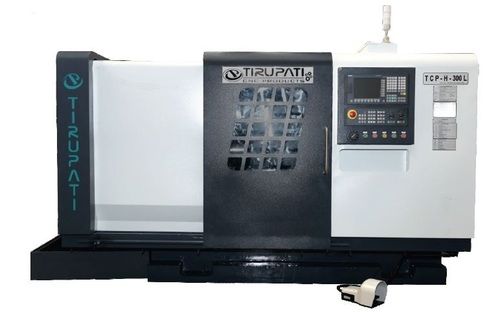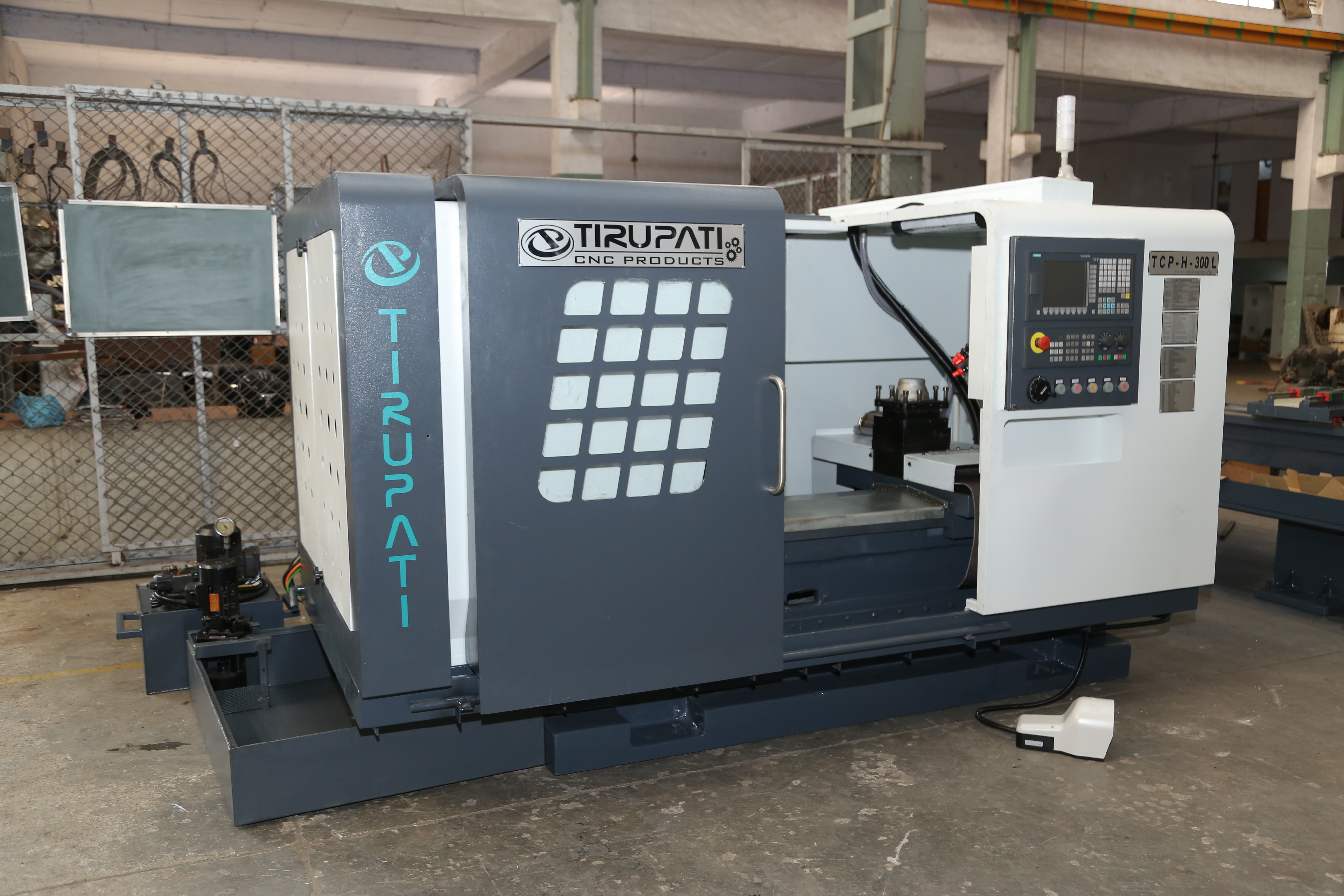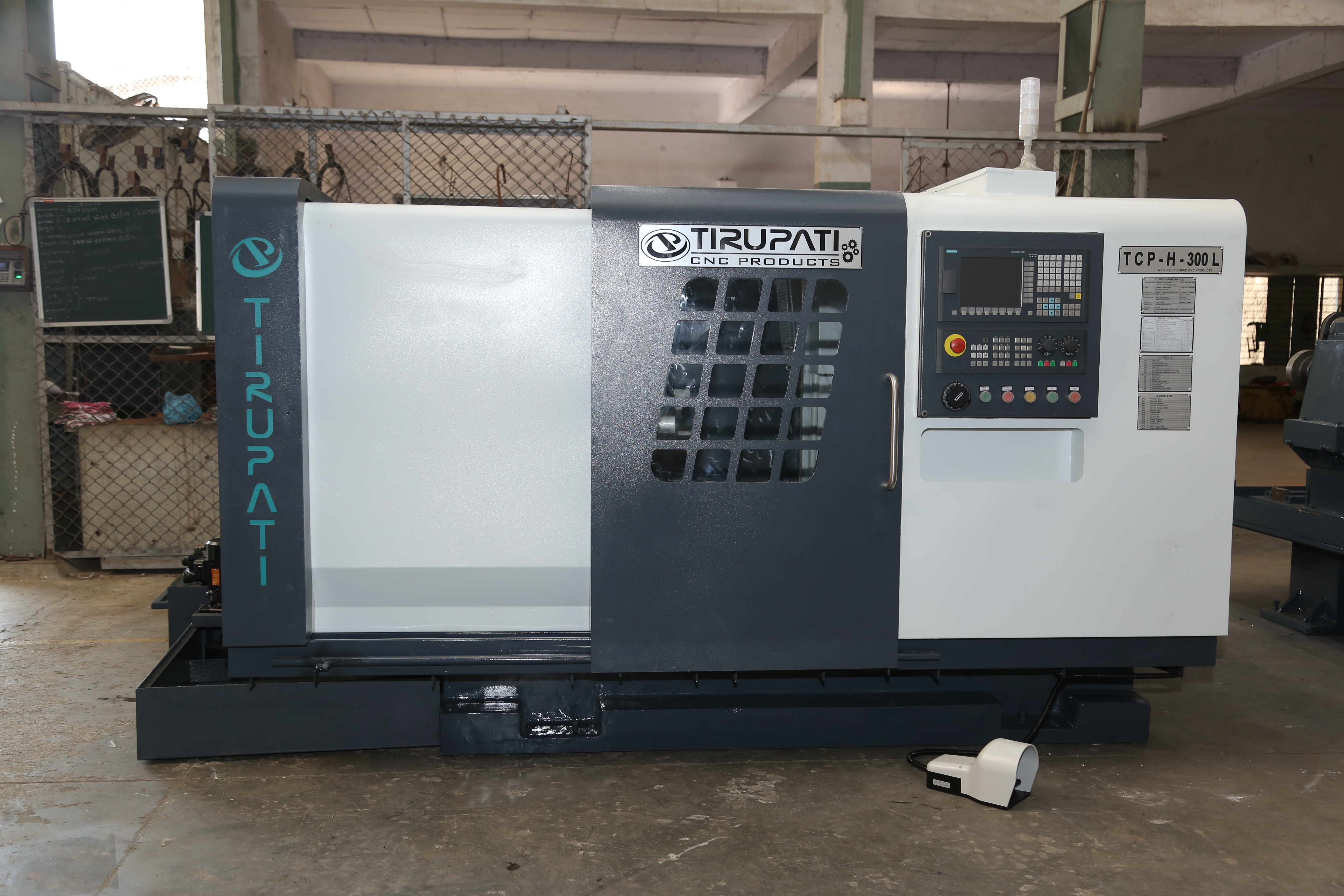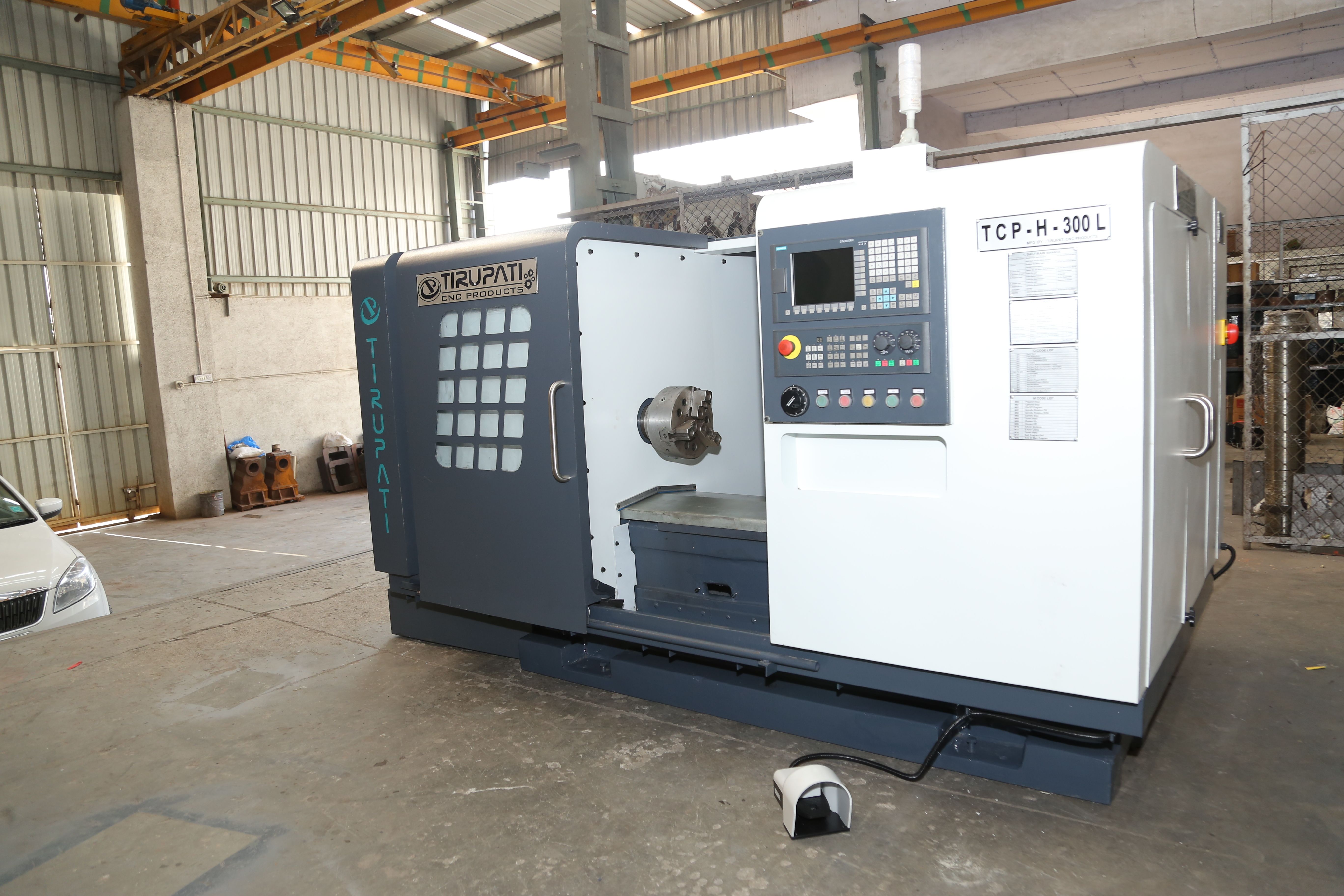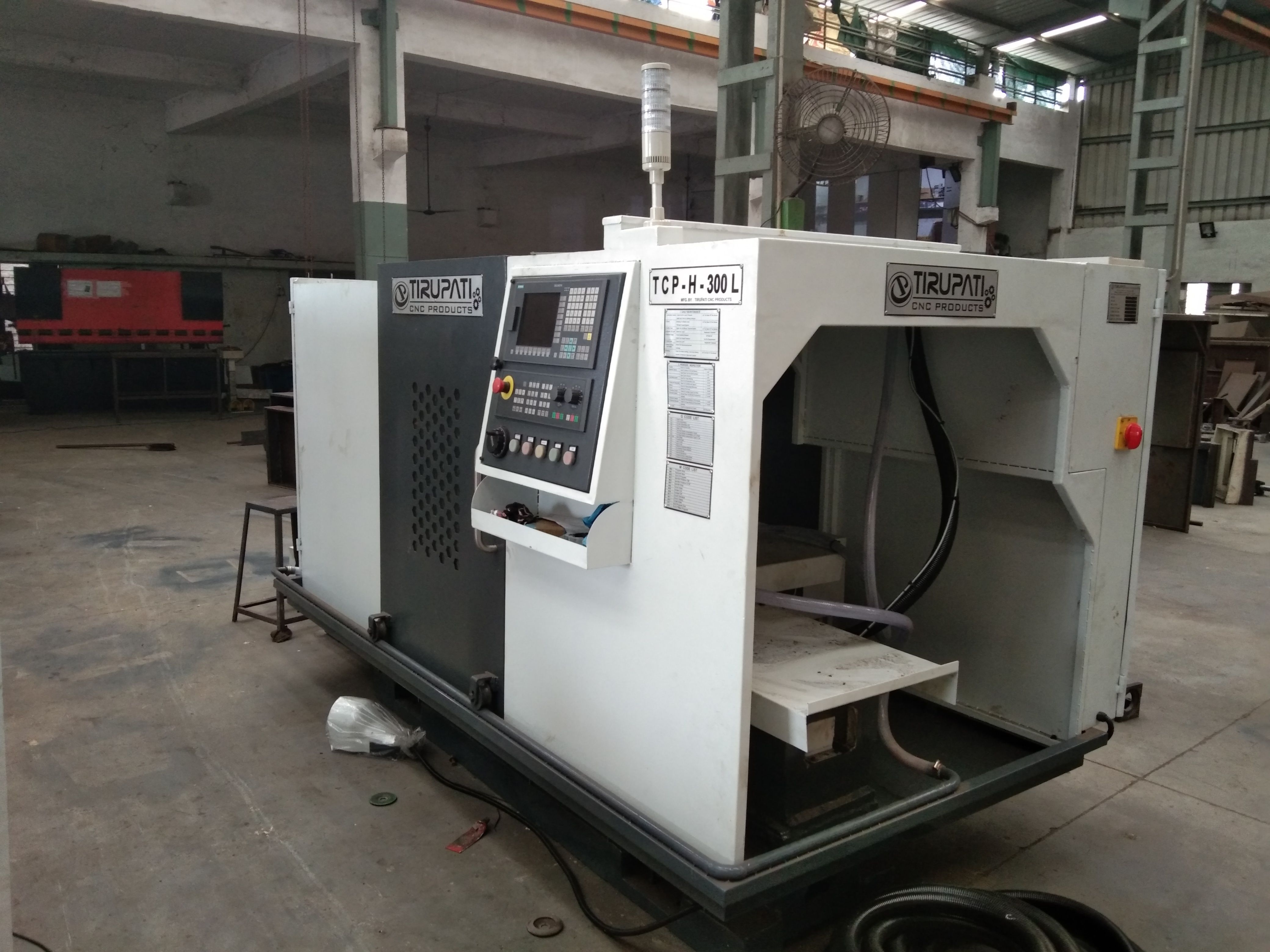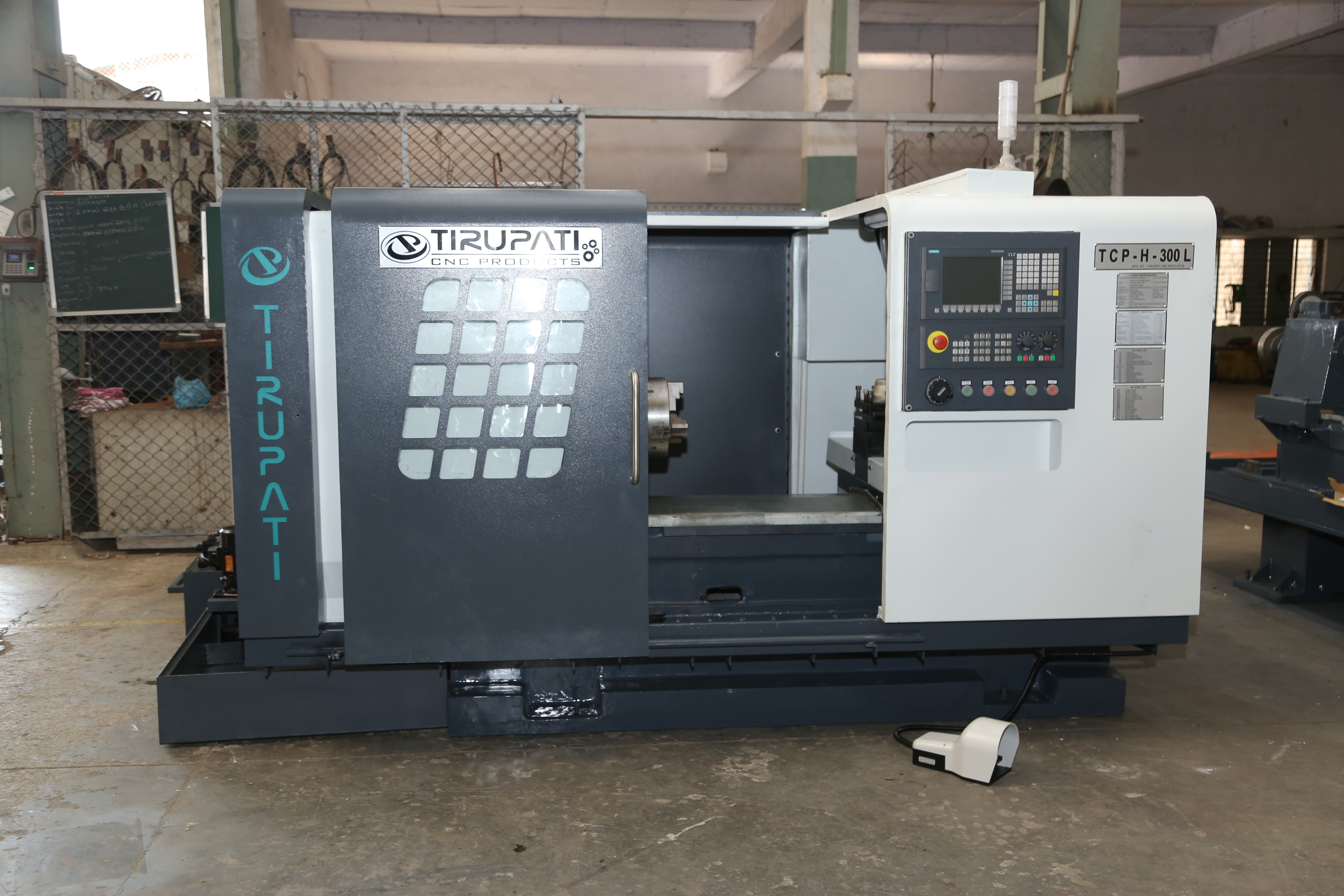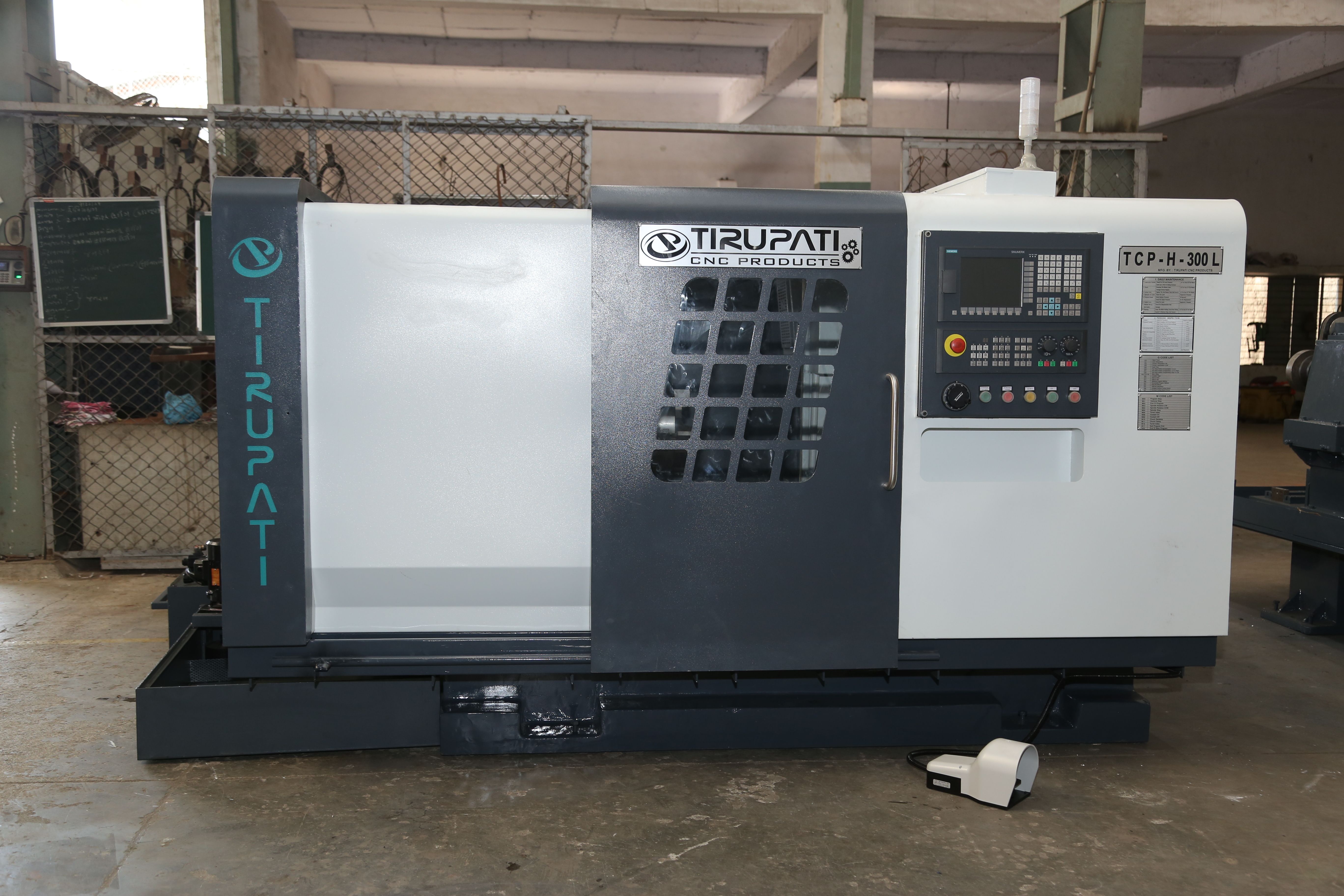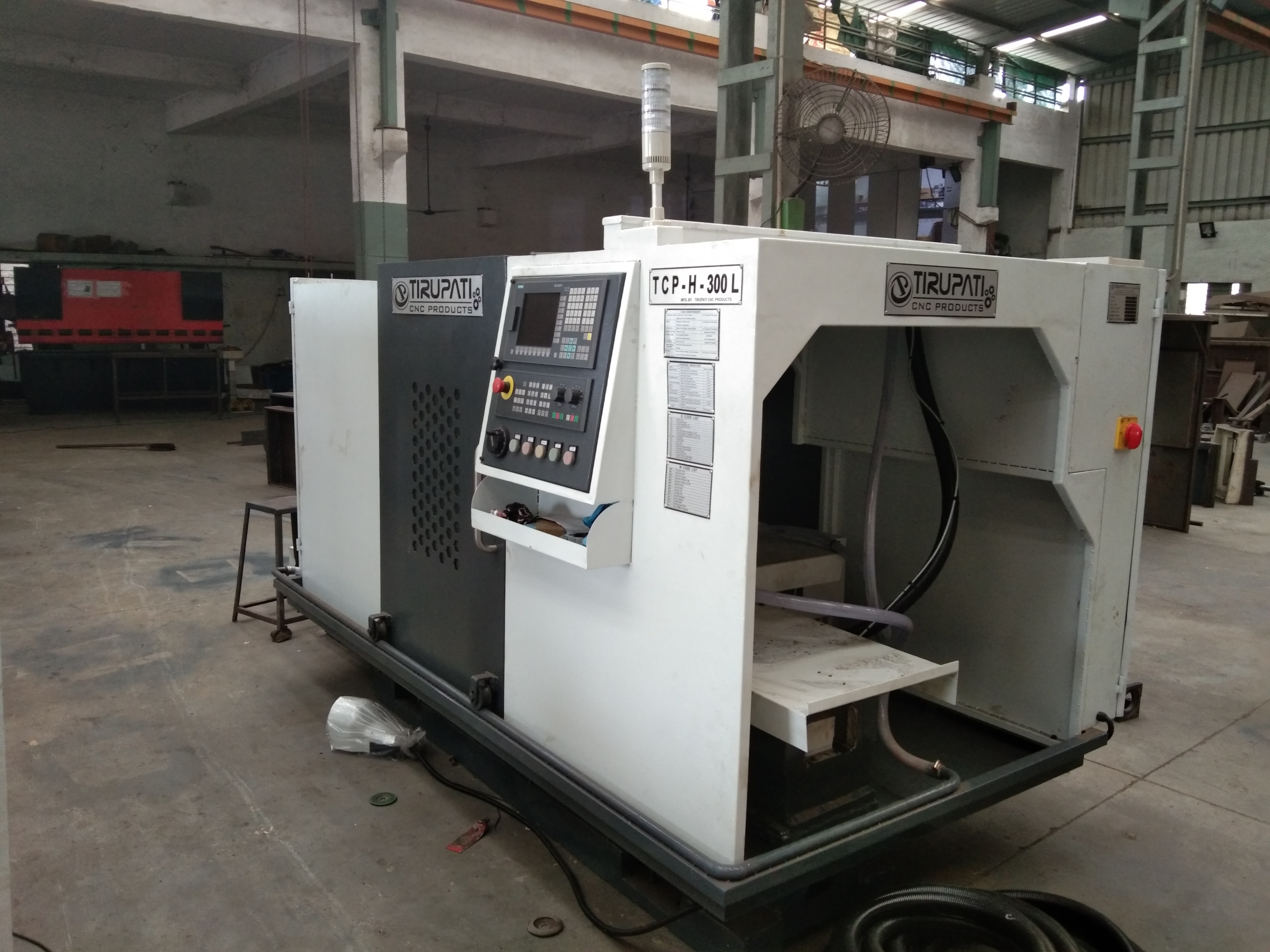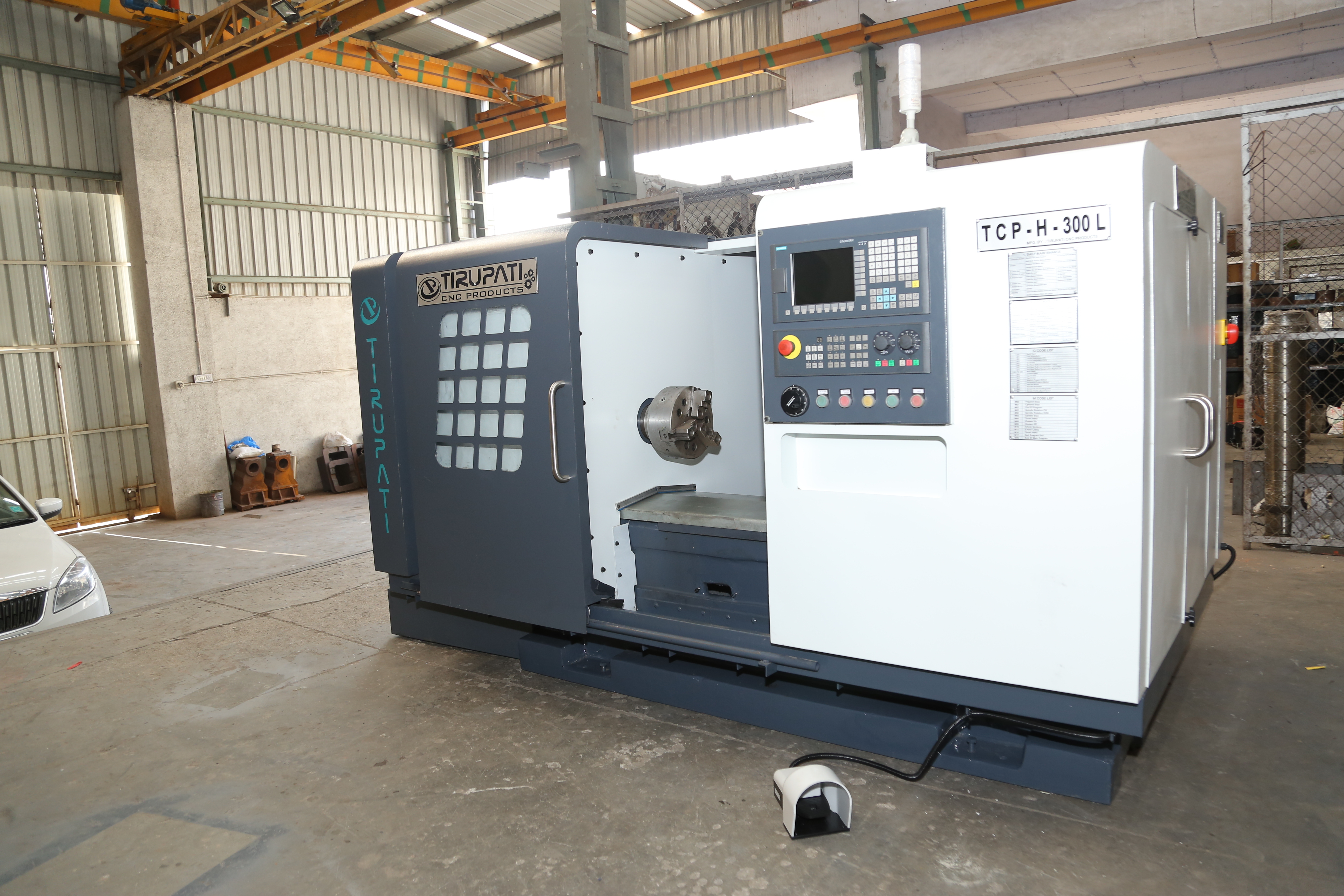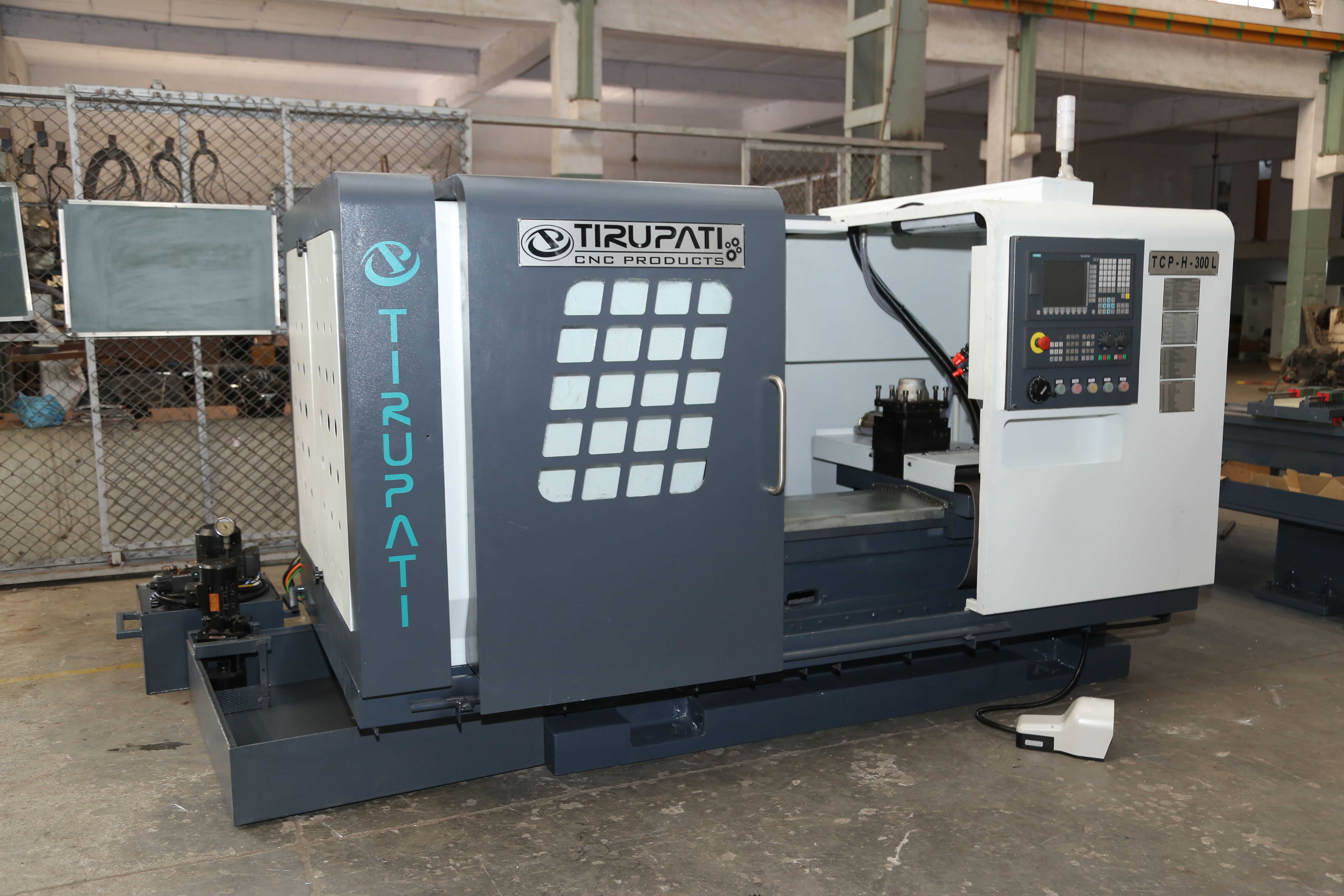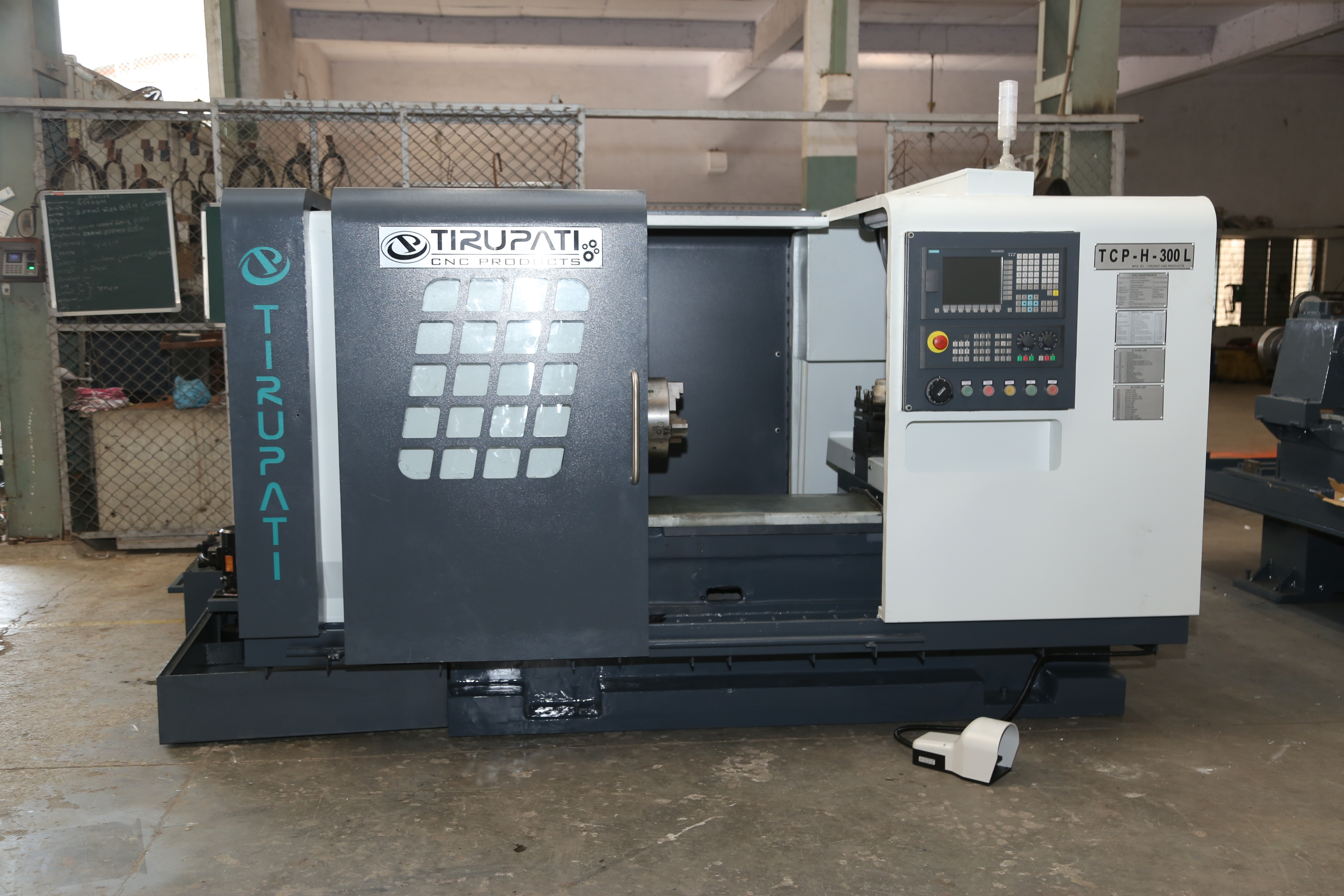Product Description
A Heavy Duty CNC (Computer Numerical Control) Lathe Machine is a type of machine tool used for shaping material, typically metal or plastic, by rotating it against a cutting tool. The "heavy-duty" designation indicates that the machine is designed to handle larger and more robust workpieces, as well as more demanding machining operations.
Here are some key features and characteristics of a heavy-duty CNC lathe machine:
1. Construction and Stability:
- Heavy-duty CNC lathes are built with a sturdy and robust frame to handle large and heavy workpieces.
- The construction is designed to minimize vibrations, ensuring stability during high-speed and precision machining.
2. Bed Design:
- The bed of the lathe is an essential component that supports the carriage and other major elements. Heavy-duty lathes often have a wide and rigid bed for enhanced stability.
3. Spindle Power:
- These machines are equipped with powerful spindles to handle large cutting forces and provide high torque for heavy-duty machining.
- The spindle motor is often designed for variable speed control to accommodate different machining requirements.
4. Tool Turret:
- Heavy-duty CNC lathes typically feature a tool turret that holds multiple cutting tools.
- Automatic tool changers allow for efficient and uninterrupted machining by automatically swapping tools based on the programmed operations.
5. Tailstock:
- A heavy-duty tailstock provides additional support for longer workpieces, improving machining accuracy and reducing deflection.
6. Control System:
- CNC lathes are controlled by computer systems that allow for precise control of cutting parameters.
- The control system includes a user interface for programming and monitoring machining operations.
7. Chuck and Workholding:
- Heavy-duty chucks are used to securely hold large and heavy workpieces.
- The machine may have various workholding options, such as jaw chucks, collets, or specialized fixtures, depending on the application.
8. Coolant and Chip Management:
- Efficient coolant systems and chip management are crucial for heavy-duty machining to prevent tool wear and maintain high-quality surface finishes.
9. Automation and Integration:
- Some heavy-duty CNC lathes are designed for automation, incorporating features like robotic loading and unloading systems for increased productivity.
10. Accuracy and Precision:
- Despite their size and power, heavy-duty CNC lathes are designed to maintain high levels of accuracy and precision in machining operations.
Heavy Duty CNC Lathe Machine Specification:
1. Maximum Turning Dia. - 400 mm
2. Standard Turning Dia. - 300 mm
3. Turning Length - 3000 mm
4. Width Of Bed - 375 mm
5. Height Of Centre - 300 mm
